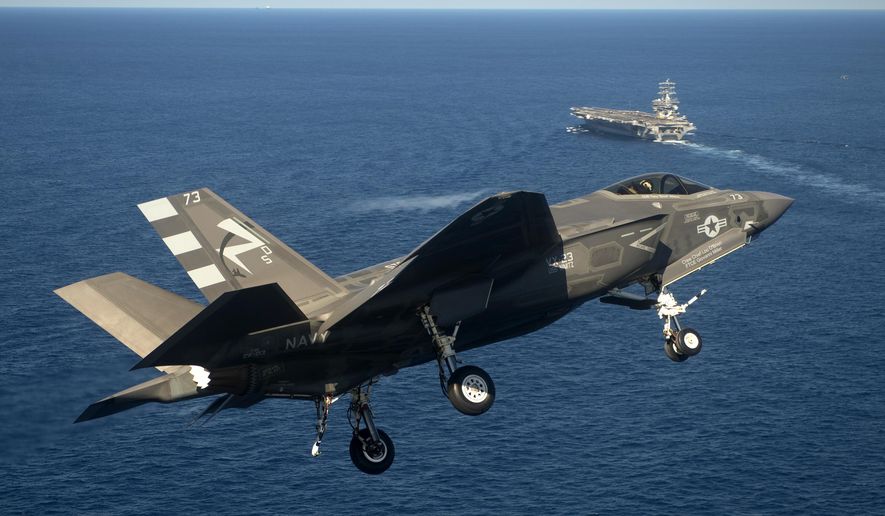The F-35 Joint Strike Fighter stands to be the most sophisticated jet in the Air Force’s arsenal once ready for combat — but the Pentagon wants to first see how the state-of-the-art aircraft performs against its old standby, the A-10 “Warthog.”
Top brass in the Department of Defense said they’re preparing for exercises that will compare the capabilities of the F-35, its fifth-generation fighter still in the final stages of development, with those of the A-10, a close-air support jet that’s been used since the first Gulf War.
“The comparison tests on the close-air support mission will reveal how well the F-35 performs and whether there are gaps, or improvements in capability, compared to the A-10,” J. Michael Gilmore, the Pentagon’s director of operational test and evaluation, told reporters last week.
There will “absolutely” be differences between how the F-35 and the A-10 conduct close air support missions, Mr. Gilmore said, and comparison tests will help the Air Force understand the strengths and weaknesses of either aircraft before the Joint Strike Fighter is officially entered into combat.
The F-35 program is slated to ultimately cost the U.S. military $1.5 trillion, but the Air Force doesn’t expect the jet to be ready until 2021. A series of setbacks have already created obstacles for the program along the way, and Defense Department officials aren’t certain that the aircraft will be able to replace the A-10 in every aspect of air-to-ground combat.
“I do not doubt that there will be some areas in maybe a permissive environment where the A-10 may be able to do certain things that the F-35 at that stage of its development may not be able to,” Lt. Gen. Arnold Bunch, the Air Force’s deputy assistant secretary for acquisition, said during a Aug. 27 event at the Pentagon, Defense News reported. “We will utilize all of the resources that we have to be able to meet that CAS requirement if we find out that the F-35 is unable to do that at that point.”
The tests are currently slated to occur in 2018, at which point the Air Force expects the software that supports the F-35’s fighting capability to be 100 percent complete.
According to the Air Force, 99.9 percent of the required software for the aircraft has so far been coded — leaving about 10,000 lines of code out of more than 8 million to be written.
• Andrew Blake can be reached at ablake@washingtontimes.com.




Please read our comment policy before commenting.